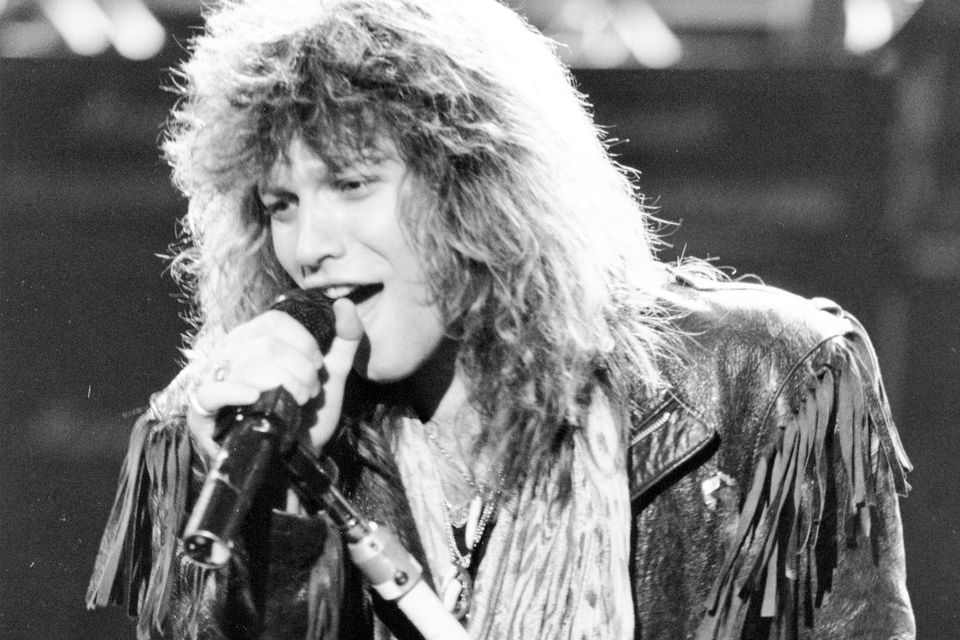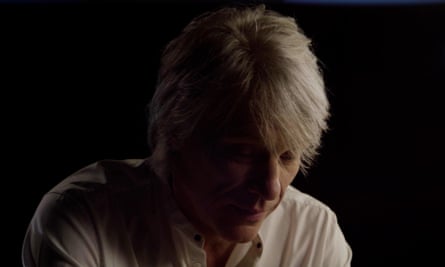Thank You, Goodnight review – Bon Jovi’s surprisingly devastating ode to lost youth

There’s plenty of great stuff in this documentary to keep super fans happy – but you only need to know 80s banger Livin’ on a Prayer to get emotional as the ageing band break down before your very eyes
Every pop biography has the same dilemma: fans of the artist want to know all the details, while viewers with only a passing interest just want to get to the good stuff. You can tell which side of the line Thank You, Goodnight: The Bon Jovi Story falls on by looking at the running time. Its four episodes are all well over an hour long.
By far the strongest instalment is the opener, which can be watched in isolation as an evocative charge through the period leading up to the band’s formation and breakthrough. The best rockumentaries have the power to pitch us into a past moment we wish we could hang out in – the place and time here that crackles with fantastic potential is New Jersey in the back half of the 1970s.

In clubs such as the Fast Lane, the Upstage and the Stone Pony, singers including Southside Johnny and a rapidly rising Bruce Springsteen play blue-collar rock mixed with blue-eyed soul. Handsome, ambitious John Bongiovi and his nerdy pianist sidekick, David Bryan, are awestruck audience members by the age of 16, and are soon on stage themselves with their covers band, the Atlantic City Expressway. They get home from gigs in Bryan’s van at 5am, then get up again at 7am and go to high school. We’re at the peak of suburban, pre-Reagan America, with second- and third-generation immigrants settled into a life where their paychecks pay for decent everyday existences, with some fun and a few dreams on top. The documentary has enough newsreels, press clippings, reminiscences and home movies to put us right in the middle of it.
By 1983, Bongiovi has met his musical soulmate, guitarist Richie Sambora, and named himself and his new band Bon Jovi, the two-word styling a homage to (Eddie) Van Halen. Episode two tracks the group as they release a brace of reputation-building albums followed by a third LP, Slippery When Wet, that sells 14m copies. With their torn T-shirts, leather jackets and outrageous hairdos, plus a pop-metal sound that’s like Mötley Crüe with better tunes or Springsteen without the anxieties about the American Dream being a swiz, Bon Jovi tour the world relentlessly, seeing a million faces and rocking them all. The sixtysomething versions of them interviewed here still glow with the rush of it.

Then, however, we must work our way through the band’s increasingly uninteresting post-Slippery career. It’s a catalogue of rock tropes: Bon Jovi burn out as the carefree 80s end, record solo albums, regroup, do a country album, do a stunning-return-to-form album, quietly replace their bass player with a session musician because their old pal drinks too much and can’t really play, forge a more “mature” (dull) sound, then fall out with Sambora when he fails to attend a studio session and Jon gets someone else to record his guitar parts. Lowlights include 2002’s Bounce, an LP that aimed to help the US heal after 9/11, and the album 2020, named after its year of release, which responds to Covid and Black Lives Matter and contains a song called, regrettably, American Reckoning.

Bon Jovi take themselves too seriously. At least, to us they do, but the documentary points up the tension, in an ephemeral art form, between performer and consumer. Viewers with the correct view of Bon Jovi’s oeuvre – Bad Medicine and You Give Love a Bad Name are bangers, and Livin’ on a Prayer is an almost heartbreakingly perfect work of art, but everything else is cheesy stodge – have to reckon with footage shot in 2022, behind the scenes on the band’s comeback US tour. Jon Bon Jovi, his big rock barnet now in that grey area between “still got it” and “yer nan’s had her hair done”, is outwardly the smooth CEO of the enterprise, but he can’t sing like he could before. Thousands of live shows, all of them including that reckless key change in Livin’ on a Prayer, have taken their toll. The vitamins, vocal exercises, humidifiers and laser treatments aren’t working. In interview, he breaks down as he remembers the days when he knew his band members, his crew and the 60,000 people who had bought a ticket to see Bon Jovi could rely on him to deliver a flawless performance. He can’t go back there.
Being blindsided by a surprisingly devastating rumination on lost youth bolsters the lesson you’re rewarded with if you sit through all of Thank You, Goodnight: that three-minute throwaway track you half-listen to on the radio is the culmination of somebody’s life’s work. All that life is here.





